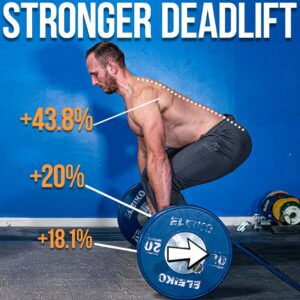If you’re trying to build a stronger, more robust back, deadlifting is one of the best ways. For anyone trying to improve their back development, it can be one of the most effective ways to do so. Unfortunately, a lot of people are not well trained and often miss out on getting the most from it.
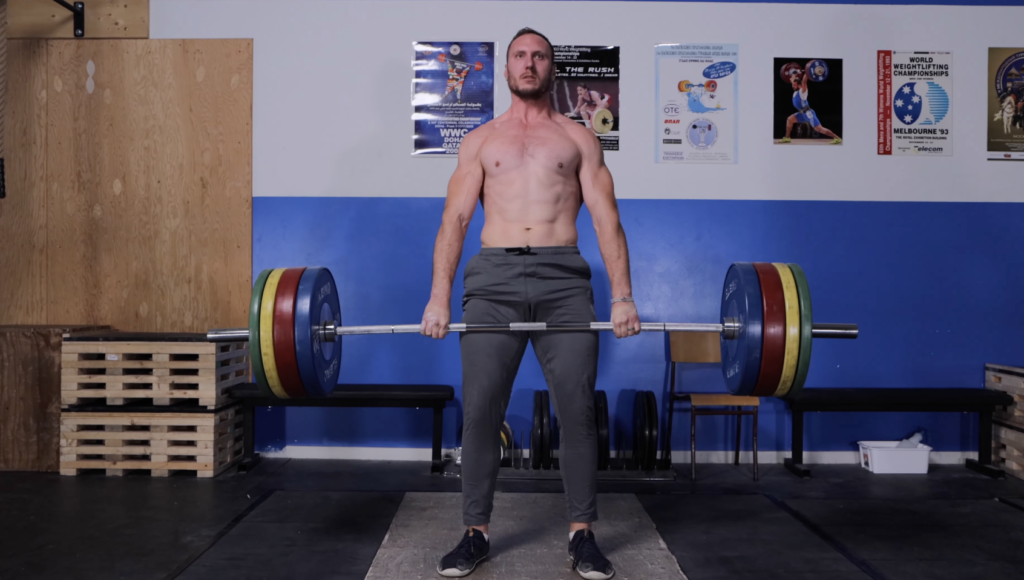
Now this blog isn’t going to be a basic review of technique for the deadlift. Instead, we want to build off the basics and highlight some ways that you can build your deadlift based off research.
So let’s talk deadlifts!
1. Get the bar back
This is all about leverages!
If you hold a weight at your at your chest and then start to push it further away from you, it gets harder to hold it. The weight didn’t change, but the demand did. How hard our muscles have to work is based on something called torque. Torque is dictated by the force, but also the distance from the axis. The further out from something the more torque demand.
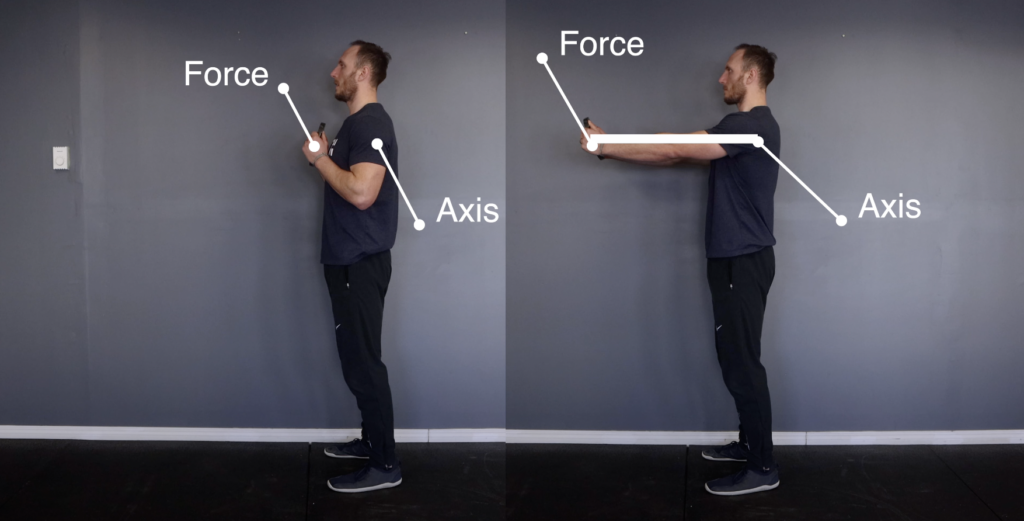
When a lot of people are taught the deadlift, they’re instructed to have the bar over the ball of their foot and be bent over with their arms straight down and the tip of their shoulder over the bar. This isn’t a bad position, but if we consider physics we can improve this. Hancock 2012 examined having the bar shifted back to start over the navicular bone, which is the back of your arch. Then you have the spine of the scapula over the bar.
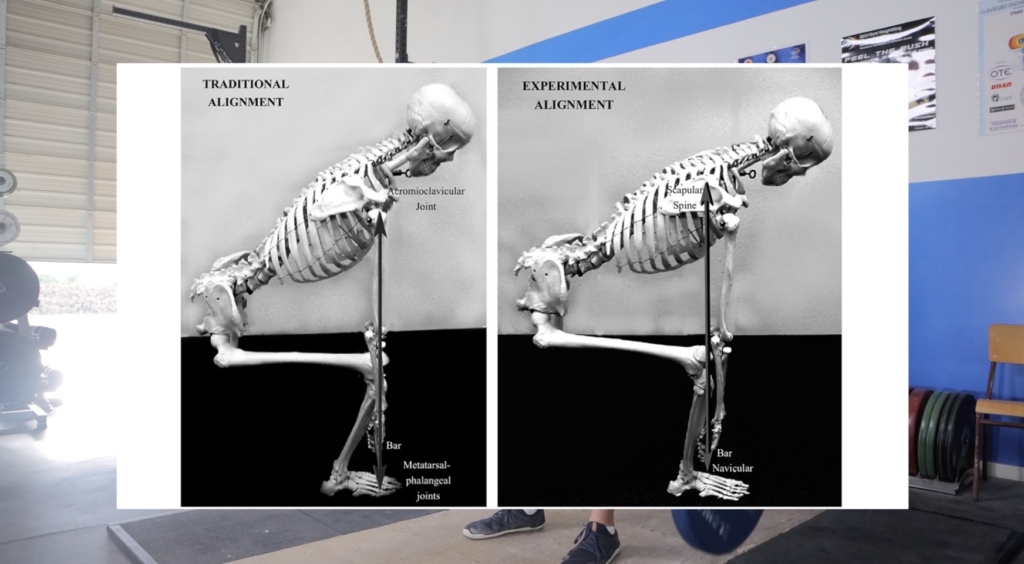
When transitioning to this position, there was a 43.8% reduction in horizontal bar movement. What that means practically is that you’re essentially reducing how much demand is on your back and hip extensors. This small change will take a bit of practice but it can have a solid pay off.
2. Use your lats more
This actually builds off the prior one.
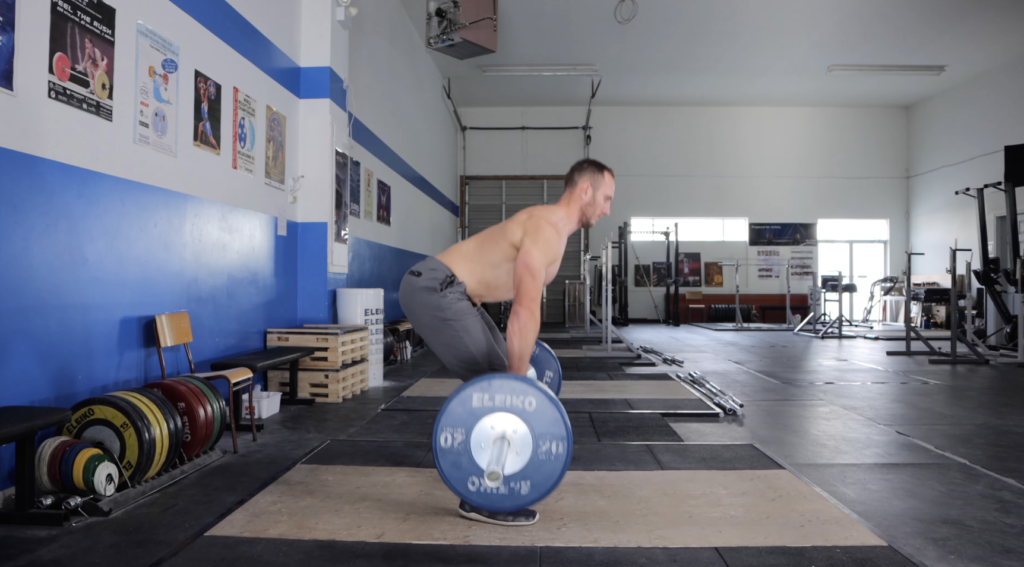
When we are in that bottom position, we want to try and have our shoulder blades depressed and that bar pulled back. Engaging our lats will help with this.

As well, activating our lats will encourage more spinal extension which can be beneficial for managing the demands in the deadlift as we fight to bring the bar up. Building off that last point more, using the lats once we leave the ground will help to keep the bar back. If we keep the bar back, we can reduce the moment arm for the hip and spinal extensors.
For those who may struggle with this, we can utilize a drill to teach it. Set up a band so that it’s anchored around chest height, and then step back so that when you pull your hands to your side there is tension. From this position, you’re going to keep your hands back and focus on maintaining active lats while hip hinging down. This is what we want to do when we deadlift.
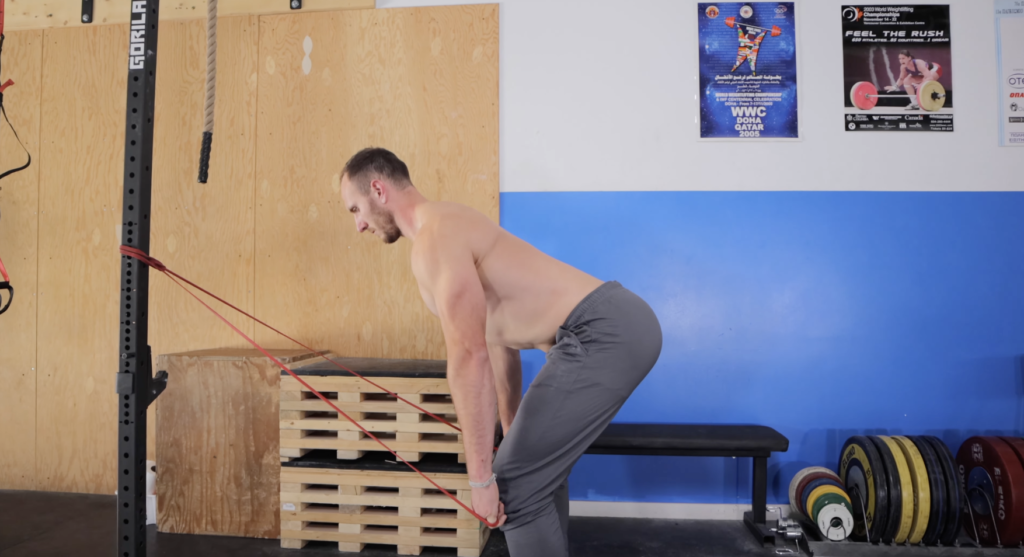
3. Ditch your squishy shoes
I get it, you want to look fly for the gram. Unfortunately, while you might get a few more likes for having some killer shoes, you’re leaving a lot of pounds off the bar and in the long run, that’s gonna give more pay off. By throwing away your thick shoes, and going to either barefoot or minimalist shoes we are able to do two things:

- Reduce the distance the bar has to travel
- Have a more stable base.

Chulvi-Medrano 2010 found that having a more stable base had a significant impact on deadlift performance. So find a way to ditch those shoes and get lifting.
4. Strengthen that bottom position
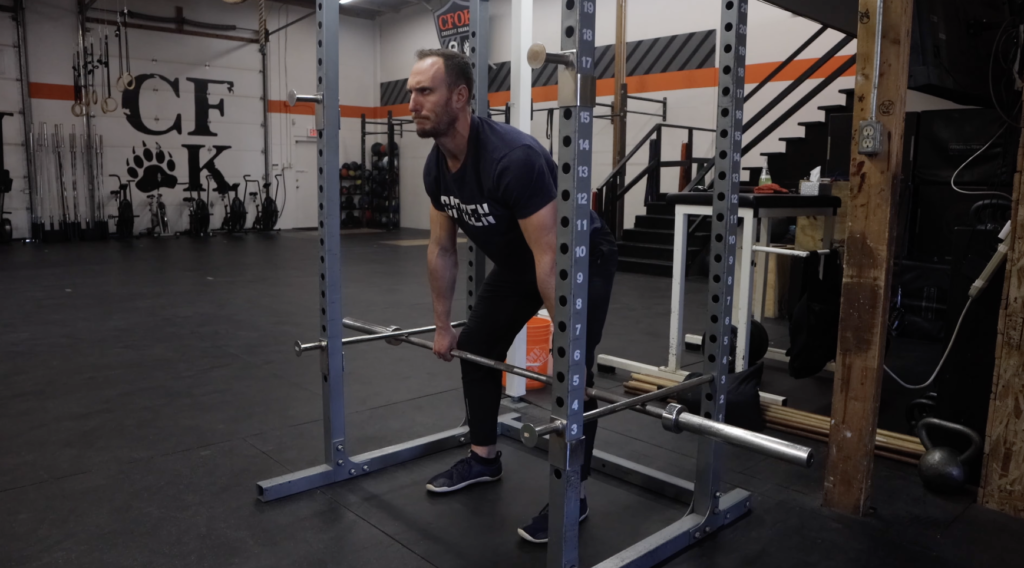
Bartolomei 2019 examined the isometric strength and rate of force development at different positions during a deadlift. They found that highest correlation between someone’s 1 rep max was that of the mid shin position. This makes sense as Beckham 2012 found that for powerlifters the bottom position was the weakest position for generating force.
Using this information, it guides us that it is likely very beneficial to strengthen the bottom position. If you’re someone who does a lot of rack or block pulls, you’re likely missing out on this. Instead, ensuring you do a good amount of work off the floor, or possibly evening doing some deficit work could have a big impact.
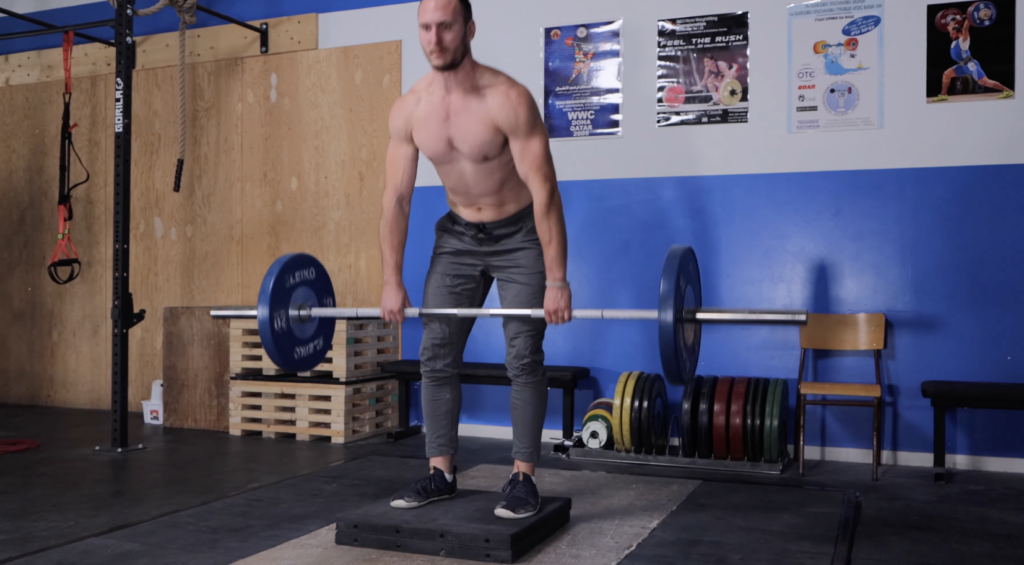
As you do these we want to ensure we maintain a similar position and technique and not change how we perform them. Take your time getting into these and not rush the weight.
Another great drill that you can do to really strengthen the bottom position is the deadlift to the knees.

Here we just perform the first portion of the deadlift and then return back to the ground. Since this is essentially the hardest position, if we build this up we will maximize our strength in the hardest part of the lift.
5. Get your hip extensors stronger

When it comes to the deadlift, the sticking point for most people is right around the knee. Kompf 2017 did a systematic review on it and found that it was very consistent for people to begin having their bar velocity slow down right around this position – and if someone was going to fail a lift it would usually be about here.
Assuming you’re building that bottom position like we discussed, the next thing is strengthening those hip extensors.
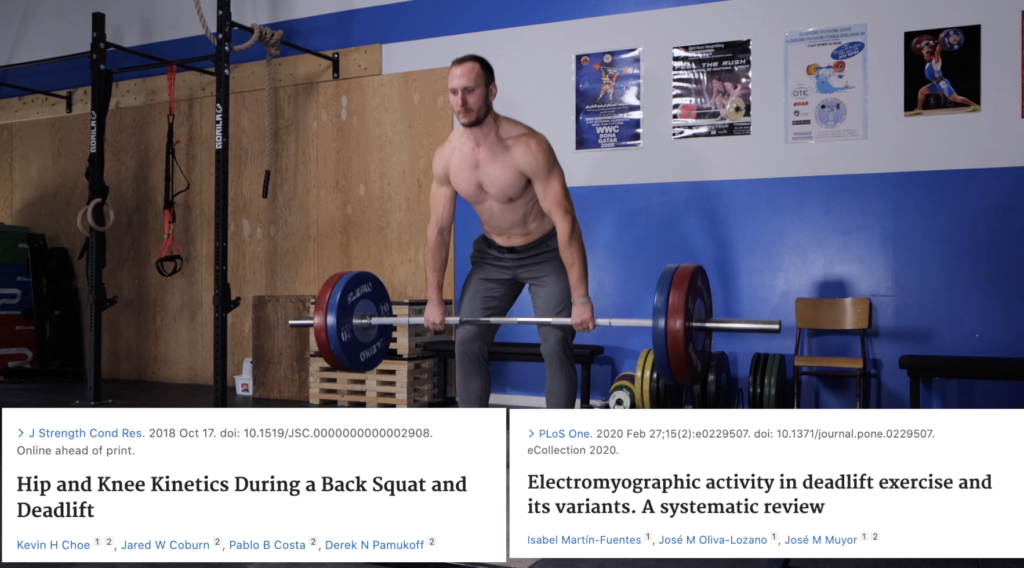
Choe 2018 broke down the kinetics of the deadlift and highlights the high hip extension demands. This is supported by the work of groups such as Martin-Fuentes 2019 who have examined the EMG of the deadlift and its variants, finding the hip extensors have very high activation during the movement.
We can take this to encourage us in building up these muscles, in particular the glutes and the hamstrings. In Martin-Fuentes paper, they found for the hamstrings that the semitendinosus had higher activation than the biceps femoris muscle during the deadlift. If we want to try and strengthen these to the highest degree then, we should try to select exercises which emphasize them. In the same paper, they found that the stiff legged deadlift had higher activation of the semitendinosus than most exercises.
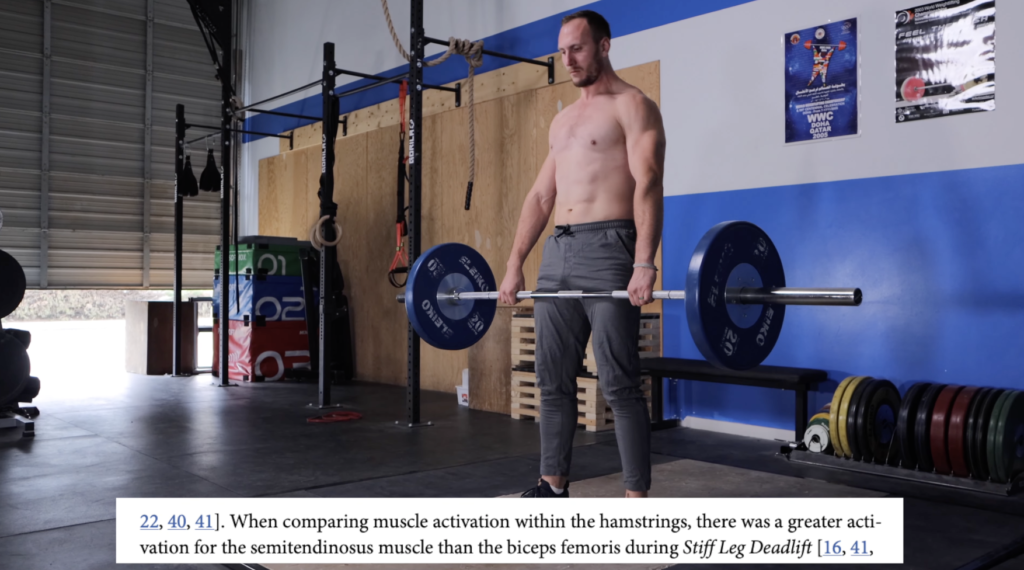
A new paper from Kawama 2020 builds off this and examined how changing foot position would impact emphasis of different parts of the hamstrings during a stiff legged deadlift.

They didn’t see a significant change for the semitendinosus, but they did see that when the foot position was changed to 20 external rotation the biceps femoris activation was much higher and when changed to 20 internal rotation the semimembranosus activation was higher.
Practically, this tells us the stiff legged deadlift is an excellent accessory movement and that for some people it may be beneficial to play around with different footing. Other good accessories to try and strengthen the hip extensors are movements like deep squats and hip thrusts.
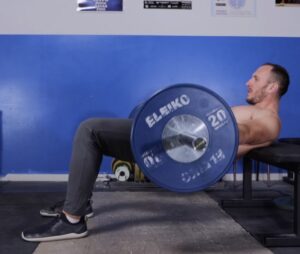
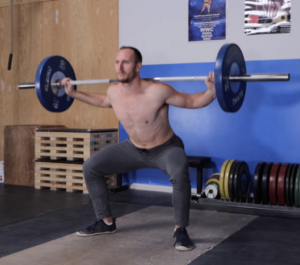
As well, in the Martin-Fuentes paper, the unilateral deadlift was shown to have very high activation of the glutes and hamstrings. Therefore making it also a great accessory movement to build these.
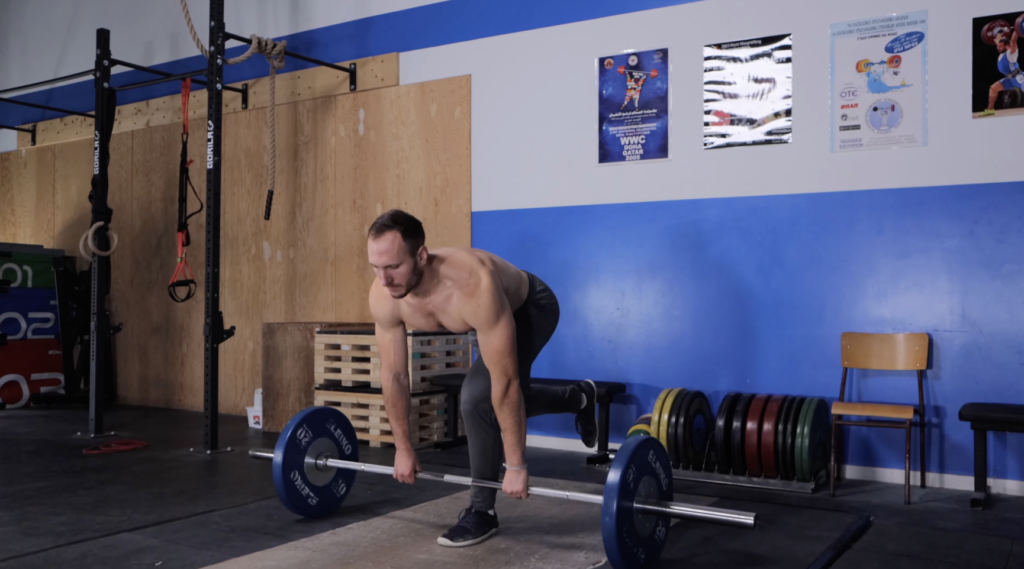
6. More Volume

If you’ve been around the lifting world for a while there was a trend a while back where it was advocated that the deadlift was special and it shouldn’t have higher volume because it was too neurologically demanding.
Well, turns out that’s wrong.
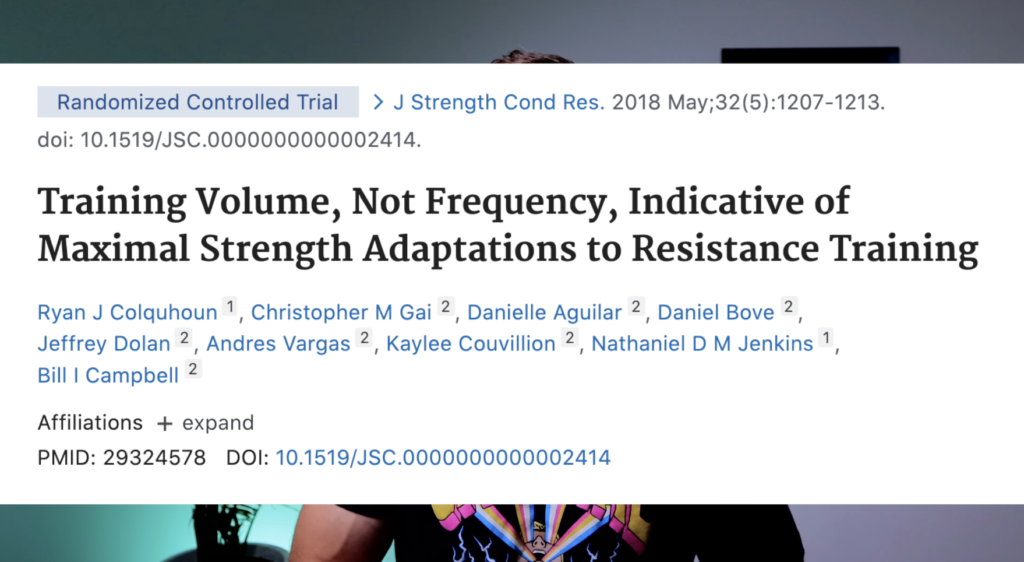
In fact, research from groups like Naclerio 2013 and Colquhoun 2018 have demonstrated that volume for the deadlift is important. Some people report struggling with performing higher volume work on the deadlift. A simple solution to that is breaking up the volume across more sessions.
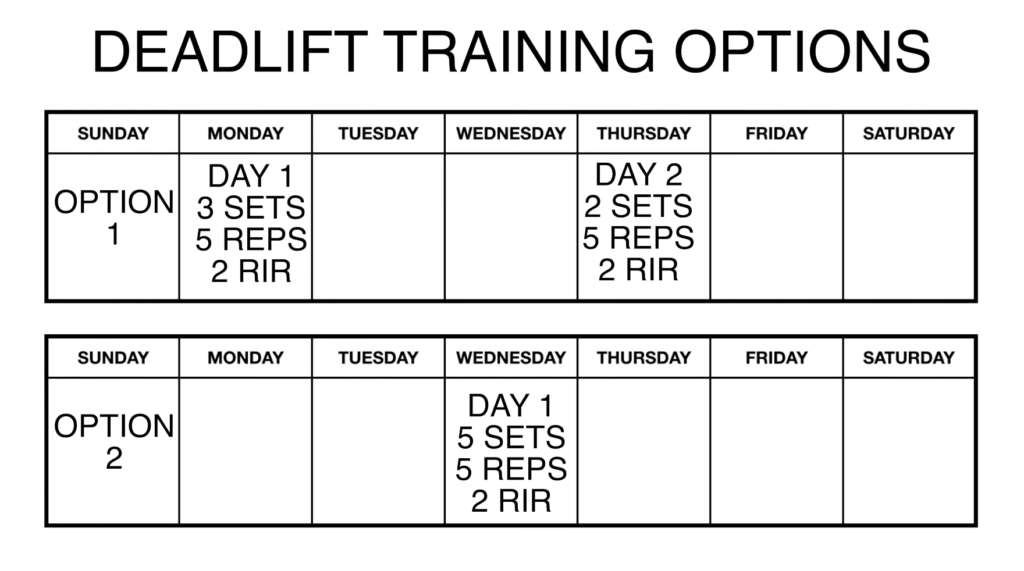
The Colquhoun paper actually found that it didn’t show a difference in how frequently people performed the deadlift as long as the volume was the same.
In most of our programs, we will usually have some kind of hip hinging work done 2-4 days a week to help divide the stress up and not overload how much people can handle in one session.
7. Use straps for volume work
When it comes to deadlifting, our goal is to develop the posterior chain and build vertical and horizontal force production.
For many people their grip can become a limiting factor in this. For anyone who doesn’t compete in powerlifting or some other sport that heavily relies on being able to grip something, straps can be a huge relief here.
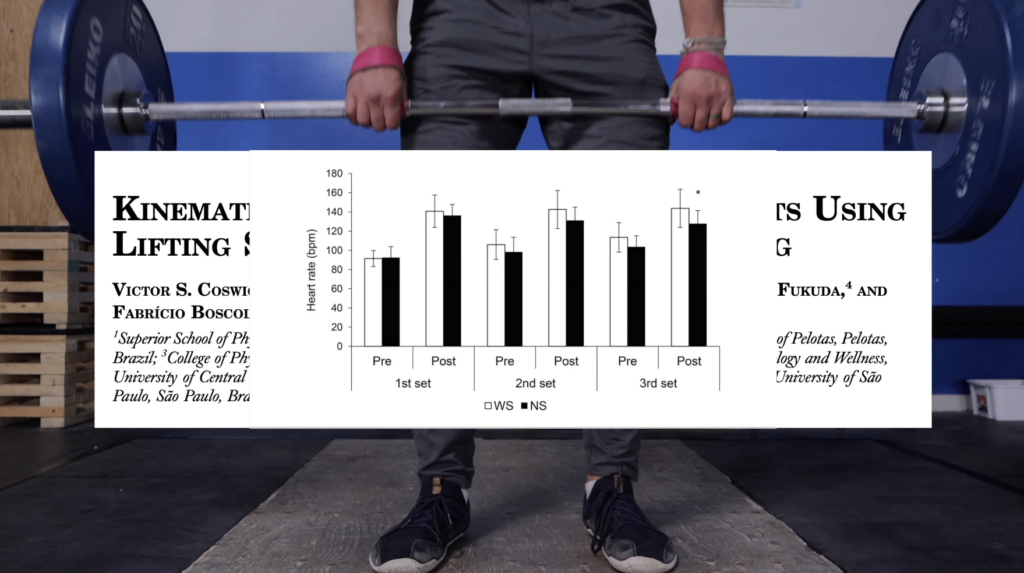
Coswig 2015 found that for athletes doing rep max sets with 90% of their 1RM that lifting straps resulted in a 20-28% increase in force across the whole set.
This indicates that for most people, the grip could limit how much work someone does for their other muscle groups, therefore by utilizing straps we can pump out more volume.
8. Train your grip
Now you might be wondering, isn’t this the opposite of what you just said?
Yes, but this point is primarily for those who are competitive lifters. As the paper showed for the last point, grip can be a major limiter for most athletes. If you’re a competitively lifter, straps aren’t going to be an option come competition time and therefore we want to make sure you’re sufficiently prepared to show off your hard work.

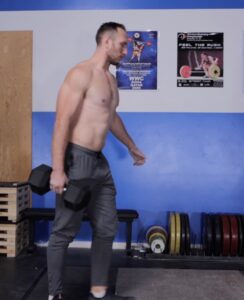
To do this, we want to utilize movements like plate pinches to help strengthen the hands and other movements like suitcase carries or other harder gripping options to strengthen the forearm.
And That is 8 Tips that you can use to increase your deadlift FAST!
Thanks for reading and make sure to watch our video on this topic if you’d like a even more information on the topic!


